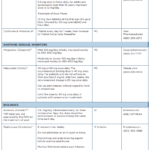 Individuals with gout may experience extremely painful gout attacks that can dramatically affect their quality of life. A new study examined whether gout flares are also associated with healthcare burden. The investigators found that patients who have more frequent gout flares do have increased gout-related costs and use more healthcare resources.1
Individuals with gout may experience extremely painful gout attacks that can dramatically affect their quality of life. A new study examined whether gout flares are also associated with healthcare burden. The investigators found that patients who have more frequent gout flares do have increased gout-related costs and use more healthcare resources.1
Robert Jackson, MD, vice president of Takeda Pharmaceuticals in Deerfield, Ill., and colleagues published the results of their retrospective cohort study online in BMJ Open in June. The cohort included patients (n = 102,703) who were commercially insured in a managed care system and members of the Medicare Advantage population. The investigators tracked gout-related costs in a database from Jan. 1, 2009, to April 30, 2012. Costs included gout-related inpatient stays, emergency department visits and ambulatory visits. The researchers acknowledged that the claims data might include coding errors and the fact that a medical claim being made does not necessarily mean that the patient experienced that disease.
The majority of patients (89,201) had 0–1 gout flare, and 9,712 had two flares. Approximately 4% of patients experienced high flare count, which was defined as three or more flares during the follow-up period. The investigators found that baseline serum uric acid (sUA) levels of ≥6.0 mg/dL predicted a higher risk of flares. Other characteristics associated with higher follow up, gout-related total healthcare costs included older age, male gender and residing in the Northeast or Midwest regions, as opposed to the West or other geographic areas.
“To adjust for differences in patient characteristics, the relationship between flare frequency and healthcare costs was examined using a multivariate regression model. In the multivariate analysis, gout-related costs for patients in the 3+ flares cohort and the two flares cohort remained higher than costs for patients in the 0–1 flares cohort. Mean adjusted gout-related total costs were $1,804, $3,014 and $4,363 in patients with 0–1, 2 or 3+ flares, respectively (p < 0.001 comparing 0–1 flares to 2 or 3+ flares),” wrote the authors in their discussion. All-cause healthcare resource utilization was also higher in the group of patients with three or more gout flares.
The authors then used a generalized linear model to calculate a follow up, gout-related total healthcare cost ratio of 2.418 (p < 0.001) in patients with three or more flares and a cost ratio of 1.671 (p < 0.001) in patients with two flares when compared with patients with 0–1 flare. The results suggest that a gout management plan that reduces flare frequency may yield significant cost benefits. Specifically, the investigators suggested that strategies that manage sUA levels should help control the frequency of gout flares, as well as costs due to gout. Although the study had the advantage of including real-world costs, the authors emphasized that the results should be validated in future studies.
Lara C. Pullen, PhD, is a medical writer based in the Chicago area.
References
- Jackson R, Shiozawa A, Buysman EK, et al. Flare frequency, healthcare resource utilisation and costs among patients with gout in a managed care setting: A retrospective medical claims-based analysis. BMJ Open. 2015 Jun 24;5(6):e007214. doi: 10.1136/bmjopen-2014-007214



